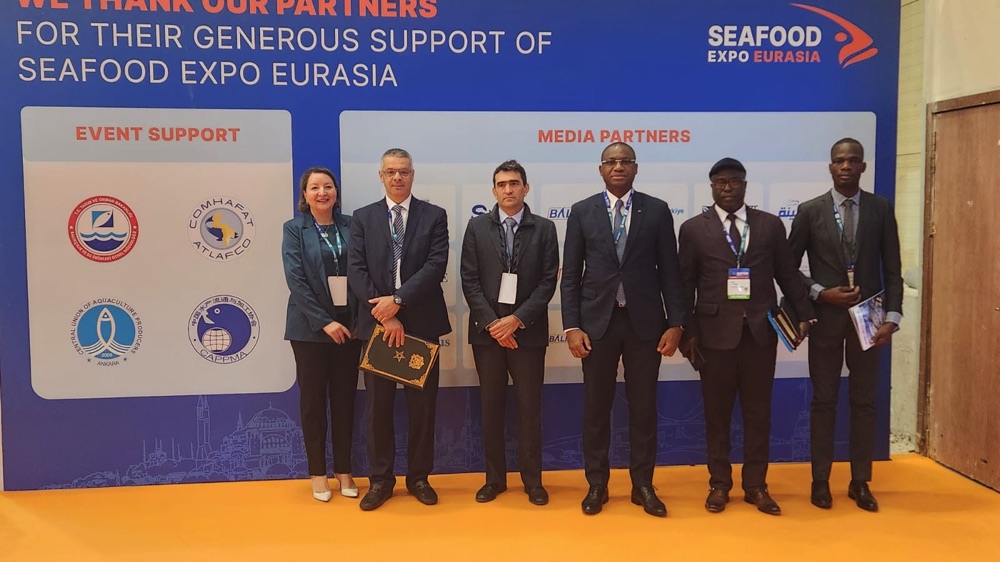The Ivorian Minister of Animal and Fisheries Resources, Sidi Touré, also President of the Ministerial Conference on Fisheries Cooperation between African States bordering the Atlantic Ocean (COMHAFAT), took part, in Istanbul, Turkey, in the opening of SEAFOOD EXPO EURASIA.
This international exhibition which dealt with the issues of fishing, aquaculture and the processing of the products produced there was held from May 15 to 17, 2024. It brought together several countries from Europe and Asia, from Africa and Latin America. This umpteenth forum was an opportunity for Minister Sidi Tiémoko Touré to present the African potential in terms of fisheries resources but also to make a plea to the international community in favor of strong added value for the benefit of the African continent.
Citing a World Bank report, the president of COMHAFAT noted that “some of the most fertile fishing areas in the world are found off the coast of Africa”. There are approximately “4.6 million tonnes of fish” which are fished per year in the maritime waters of the continent to which are added, he indicated, “a total of 2.3 million tonnes coming from fishing continental and 0.7 million tonnes from aquaculture.
All for a financial volume estimated at around “4.9 billion US dollars (…)”. According to him, the fishing sector constitutes an important source of “rural income and employment” with sustainable food security. Attracting considerable local and foreign investment, this sector constitutes a “substantial source of foreign currency and financing for public budgets”. In recent years, we have seen a sustained development in global fish trade, with fishing and aquaculture products (+68 million tonnes) counting among the food products traded in the world with participation from countries developing “31% of the world total in value and 49% in volume”, he continued.
Notwithstanding this great fishing potential, Sidi Touré deplored the low participation of Africa with a rate estimated at only “4.6% of the total value of world trade”. Moreover, the paradox is that the continent remains heavily dependent on imports. This is why he called for a break from this situation by allowing access to lucrative markets. This implies that “one must have the capacity to meet numerous requirements, in particular respecting non-tariff measures relating to consumer protection and environmental and social protection and using transparent and reliable traceability systems (… )”. “It is crucial to find a wise balance that aligns economic growth, social well-being and environmental protection. By integrating these dimensions, fishing societies and communities can address current challenges while preserving resources and opportunities for future generations. This requires collaboration between regional organizations, government agencies, businesses, communities and individuals to create a sustainable and prosperous future,” insisted Minister Sidi Touré while taking as an example the actions initiated by COMHAFAT.
In this regard, COMHAFAT is an intergovernmental organization created in 1989, it brings together 22 African countries ranging from Morocco to Namibia. Its main objective is effective and active cooperation between Member States for the preservation of fishery resources and the sustainable development of fisheries in the region. It promotes the adoption of an integrated regional approach to solving common problems according to its slogan “Harness today without compromising tomorrow…”.
The Ivorian Minister of Animal and Fisheries Resources, to conclude, hoped that this exhibition would be the place “where businessmen and fishing operators from different parts of the world will be able to discuss opportunities to strengthen existing cooperative relations and ‘explore new areas of collaboration on the basis of the win-win principle’.
As a reminder, SEAFOOD EXPO EURASIA aims to be a new international instrument of communication between companies involved in the fishing sector and sectors closely linked to it. Aimed to bring new thinking to the global fishing community, the exhibition brought together fishing, aquaculture, processing, shipbuilding, logistics and packaging companies. With the added bonus of “liberating political and geographical borders”, this show was initiated “to unite the countries of Europe and Asia, Africa and Latin America in a single place”.



